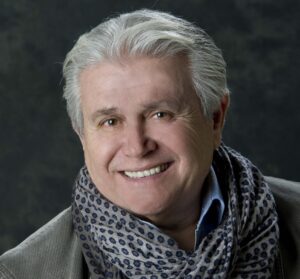An understanding of what stress really is – a response a person feels when experiencing one or more negative emotions at one time – is important in order to recognize the types, misconceptions and signs of stress. There are three different types of stress – eustress, acute stress, and chronic stress.
Eustress is a harmless type of stress. It comes from doing things that are exciting. Eustress makes a person feel vital and energized. People experience this type of stress from things like competing in a race, preparing excitedly for an event, meeting a deadline, getting ready for a first date, or riding on a rollercoaster. It’s excitement with a little bit of fear, but with a sense of happy anticipation.
Acute stress is momentary and can either be positive or negative. It’s a stress that occurs on a daily basis whenever stressful situations are confronted. Sometimes in a situation where action is required to avert danger people experience a rush of adrenaline and super strength in order to confront an urgent situation. This rush of adrenaline is caused by the acute stress. Things like averting a car accident with split second reactions, confronting a sudden outburst or confrontation, embarrassment, or public speaking — these types of situations all cause acute stress, which dissipates after the stressful event.
Chronic stress is the most harmful type of stress. It is constant, inescapable and accumulative in its ability to wear people out. Chronic stress is caused by constant exposure to a conflicted environment such as a bad marriage, a difficult job, or constant fears that cause anxiety in a person’s mind.
Although stress is a major cause of illness, it is often misunderstood and consequently many treatments used to treat it are ineffective and temporary at best. In order to better understand what stress is, we need to first clarify what it is not.
Let’s look at a few common misconceptions about stress:
Stress is inevitable and we can’t prevent it.
Not true. Many people have learned how to identify and eliminate stress through understanding their own reactions and reprogramming their own responses.
We can counteract stress just by relaxing.
Not true. Relaxation techniques are excellent and very good, but the underlying causes of stress are often something people are so accustomed to that they are unaware they are being affected by them.
A certain amount of stress is good for us. It keeps us alert.
Not true. Other than eustress, which is more about nervous excitement, chronic stress is never good for anyone.
The best method of dealing with stress is to calm ourselves whenever we feel stressed.
Not true. Stress is not necessarily a feeling or emotion that can be detected. Often it builds and is internalized, creating physical problems for us even though we may feel “okay” at any given moment. Because the effects of stress are cumulative, we need to develop techniques and habits that allow us to live completely stress-free lives, regardless of the environment we work and live in.
Stress is directly affected by emotional responses. The emotional response sends a message to the body, which in turn causes certain reactions in the body itself. Often the emotional root of stress is so buried under responses and many other complaints it is never addressed in terms of eliminating stress, and yet it is the single most important factor. If unchecked, emotional responses to tension will build up causing primary, secondary, as well as simple behavioural signs that give us an indication that our problems are actually stress related.
Emotional signs of stress are: anxiety, depression, fear, being on edge, worry, boredom, guilt, blame, and/or anger.
Primary and secondary signs of stress appear in physical ways and they affect people on an unconscious level. Although primary and secondary signs of stress are physical evidence of stress-related feelings; behavioural signs of stress are evidence of how stress can dramatically change a person’s actions even to the point of “behaving out of character.”
Primary signs are not harmful and may be due to nervousness about either positive or negative events. Secondary signs indicate more intense stress levels, which can cause negative health issues. The secondary signs must be viewed as serious and should lead a person to take preventative measures.
Primary signs of stress are: accelerated heartbeat, cold chills, nervous stomach, tightened muscles, cold hands or feet, shallow or rapid breathing, sweaty hands or feet, butterflies in stomach, and/or jittery arms or hands.
Secondary Signs of stress are: headaches, fatigue, insomnia, neck and shoulder tension, stomach disorders, chest tension, hair loss, and/or constipation or diarrhea.
Behavioural signs of stress are: avoidance, procrastination, withdrawal, hyperactivity, aggression, substance abuse, relationship problems, sexual dysfunction, obsessive-compulsive disorder, and/or obesity.
The exercise of identifying the sources of stress will give you an idea of what is really happening in your physical body. Understanding this will not only reduce stress but you will be better able to explain to your family physician what is really happening within your mind and body. Next issue we will address the endocrine system and its functions. So until then, recognize the signs of stress to help you make the appropriate changes to live a happy and relaxed life.
**************************
Flavio Iammarino holds a Ph.D in Behavioural Science and practices Clinical Hypnosis.
He is a published author, motivational speaker and clinical counselor with more than 30 years of experience in the field of personal development and mental enhancement performance, achieving remarkable success with patients at his Niagara Post-Traumatic Stress, Anxiety and Pain Management Centre.
Visit AskFlavio.com to book an appointment, or call 905-684-1717, and make a positive step towards your emotional health and well-being.
His office will be in touch within 24 hours to discuss your concerns and goals so that a positive outcome will be attained for you.






















